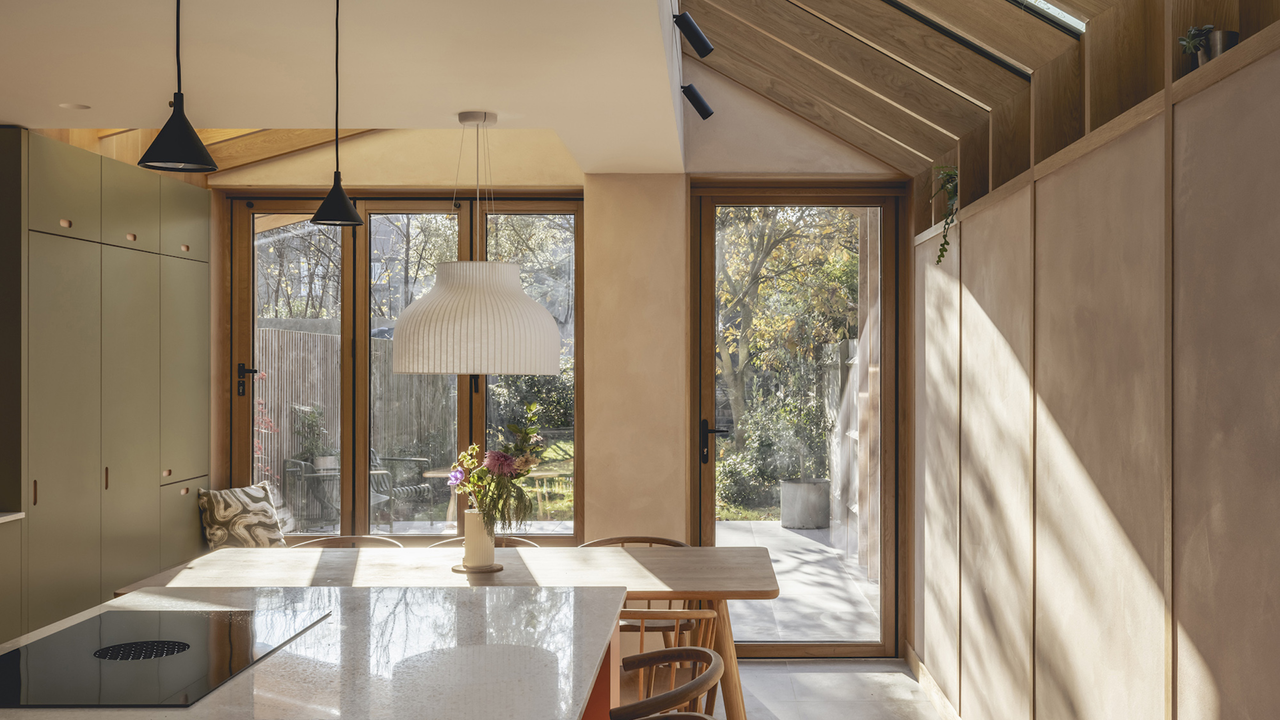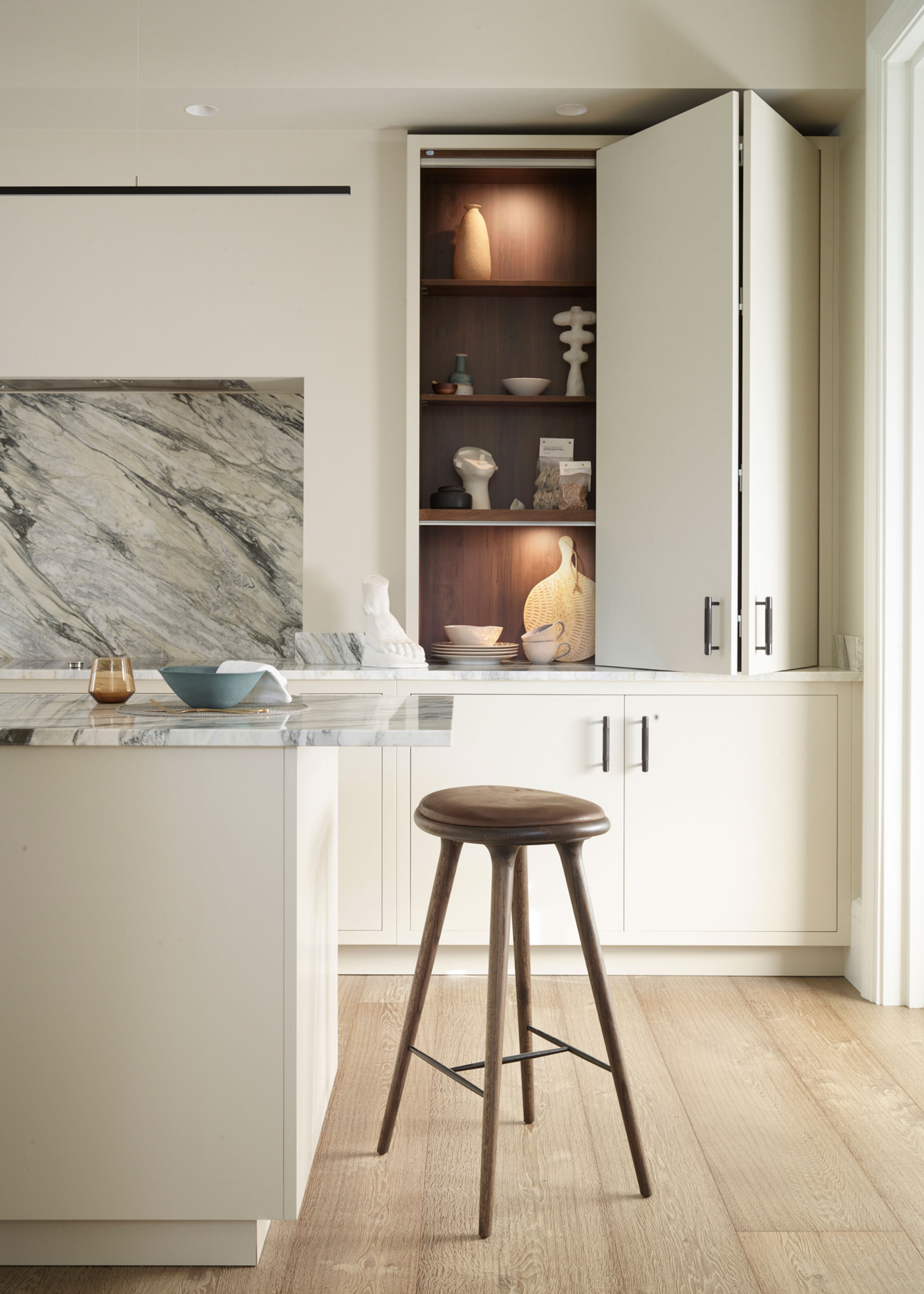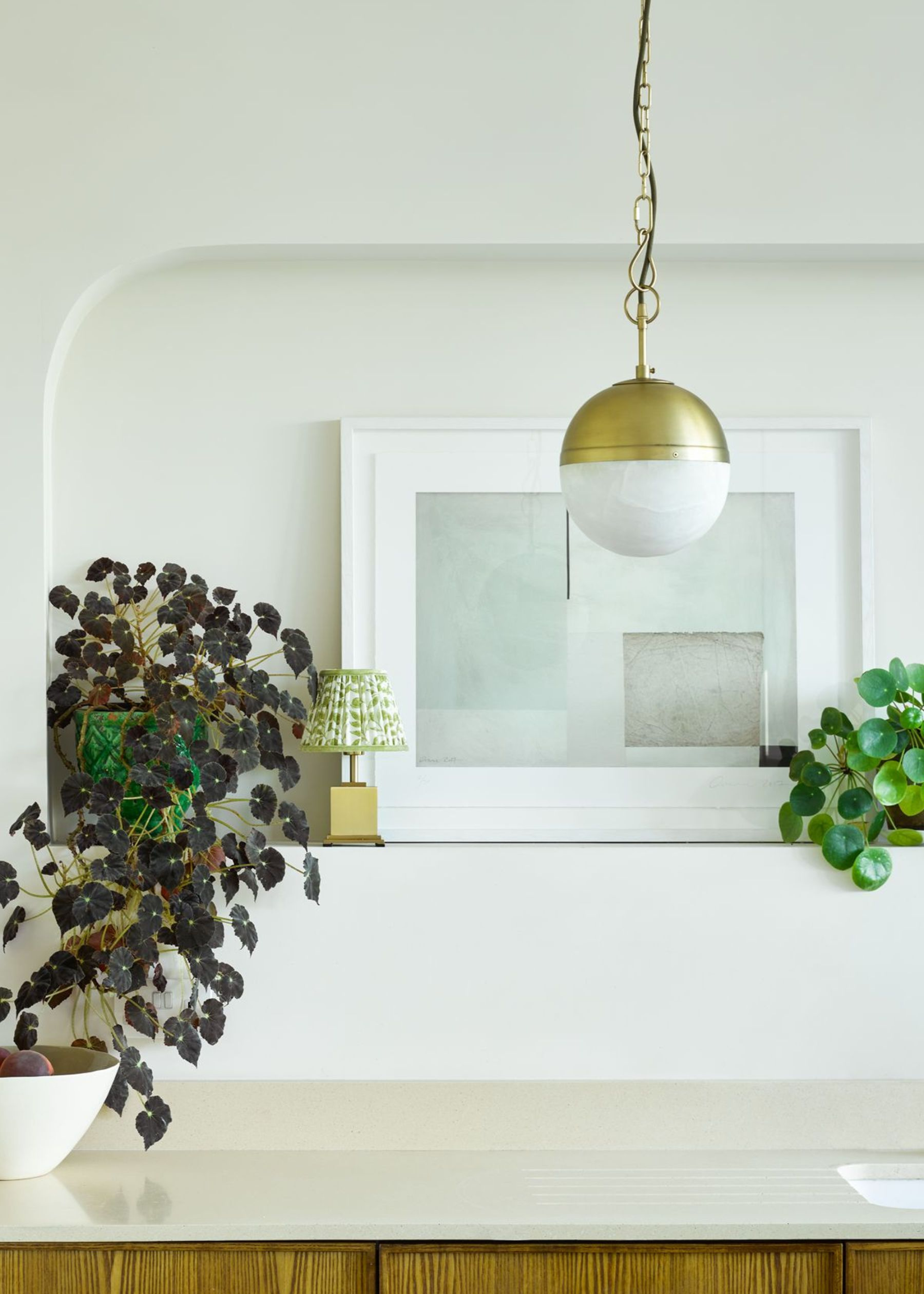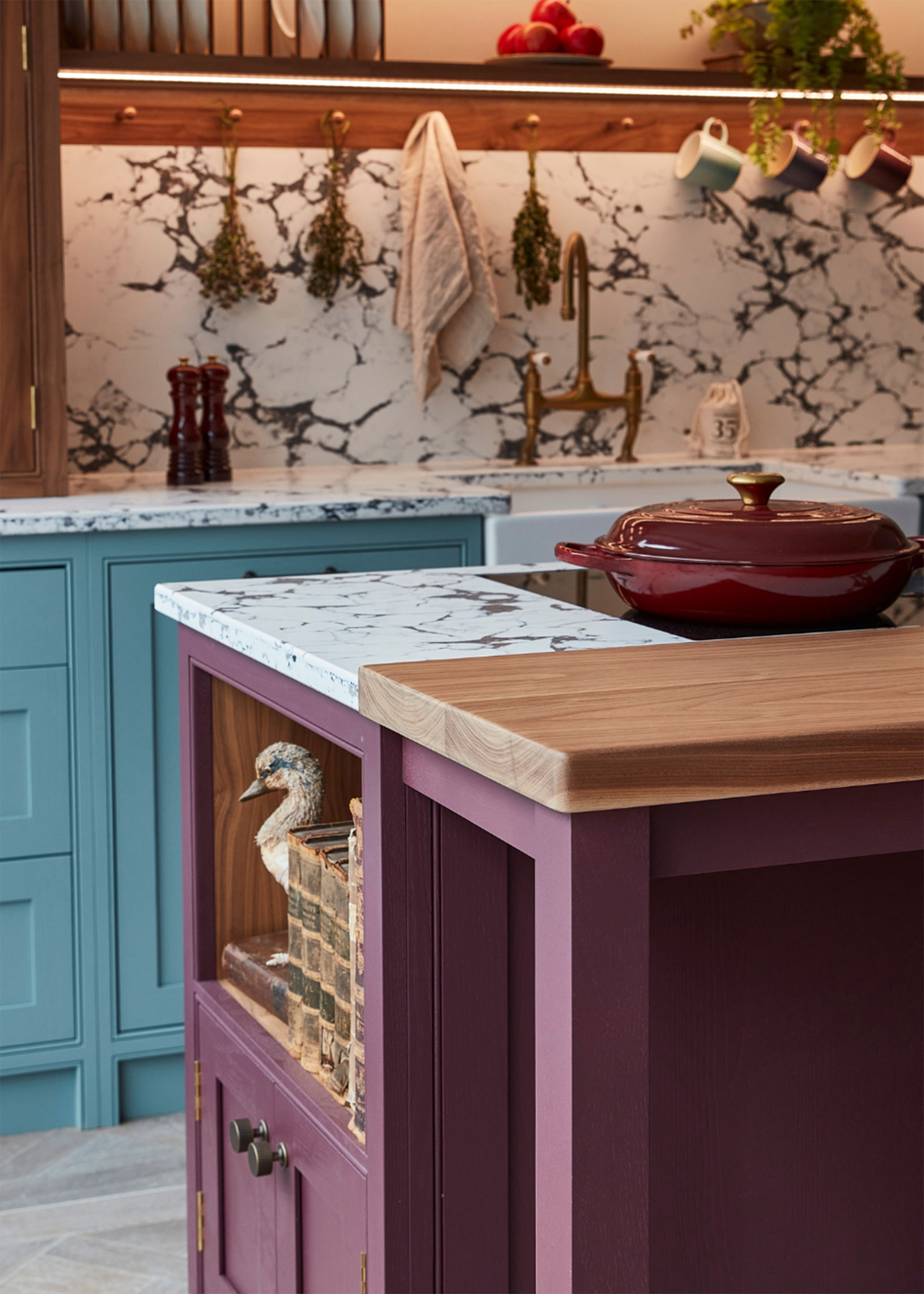
What's the difference between a cozy, inviting kitchen and a doctor's waiting office? No, the answer is not a healthy array of pamphlets — that change in atmosphere is almost entirely down to good lighting.
It may sound silly, but I've seen far too many beautiful kitchens fall victim to harsh, bright overhead lighting. Under this sterile glare, it can feel more like you're preparing for a full-body examination than a tasty home-cooked meal. But the right kitchen lighting ideas can have the complete opposite effect, creating an indescribable sense of comfort and relaxation, even during the dreaded pre-dinner party rush.
I asked the experts for all their favorite tips and secrets they use to ensure their kitchen designs never feel harsh or overwhelming, and they are easier than you may think.
1. Layer Up

If there is one piece of advice any lighting designer will give you, it's the importance of layering. That's right, it's not just for winter dressing; layering is also the key to a rich, warm, and cozy lighting scheme.
As Luke Thomas, design director at John Cullen, says, "Relying on a single overhead light often leads to glare and hard shadows. Instead, layer your lighting by combining ambient, task, and accent sources throughout the room."
The issue with the dreaded 'big light' is that you'll have to work overtime to make your overhead lighting feel less harsh, but the functionality overhead lighting provides is essential in kitchens.
To maintain optimal functionality, without stepping into the zone of sterility, Luke suggests, "Combining under-cabinet lights for practical prep zones, pendants over the island for focus and style, and subtle downlights above cabinets for a warm overall glow. This mix creates depth, reduces harshness, and allows your kitchen to feel both practical and inviting."
Pairing functional task lighting with more decorative lighting features allows you to build a scheme that prioritizes function and style in equal measure.
It is in this balance that the magic is created. Krystyna Menke from Nulty explains, "A purely decorative scheme, while beautiful, rarely offers enough task illumination. A thoughtful combination of downlights, under-cabinet lighting, and linear accents, such as shelf lighting, enhances both function and ambiance."
2. Bring in Some Warmth

The number one culprit for an overly harsh lighting scheme is, 90% of the time, not the lighting itself, but the color grade of your bulbs.
It's something you can easily miss, focusing instead on finding the best lighting brands and figuring out how to style them. But choosing the right bulbs can completely transform the look of your space. Luke explains, "The color temperature of your bulbs can completely change the feel of your kitchen."
To ensure you're buying the right bulbs, keep an eye out for the Kelvin measurement, which dictates the color temperature of your lights.
"Cool, blue-toned light (around 4000K and above) can appear stark and clinical, while warmer white light (around 2700K–3000K) brings a soft, golden glow that’s perfect for evenings and entertaining," says Luke. "Switching to warmer bulbs is one of the simplest ways to add comfort and atmosphere."
Along with the Kelvin measurement, Tom Hall, from Nulty, also suggests, "Paying attention to the Color Rendering Index (CRI) and aiming for 85+ to ensure accurate color representation of food and finishes. Avoid LED strips with low CRI ratings as they can distort colors and reduce visual comfort."
3. Take Control

"Lighting shouldn’t be all or nothing," argues Luke. In other rooms, like your living room or bedroom, dimmers are considered a given, a must-have for creating a cozier, softer atmosphere, and your kitchen should be no different.
"Installing dimmers or smart lighting controls lets you easily shift from bright, functional light for cooking to a softer, ambient glow for dining or unwinding," says Luke, "Adjusting brightness instantly reduces glare and creates a more flexible, calming environment."
Smart, automated lighting, as Luke mentioned, can be particularly helpful, as they can work on automatic timers, or can even be controlled via an app on your smartphone, for the ultimate fuss-free vibe switch.
4. Redirect and Rebalance

Of course, in any room, you'll have to consider how your lights will interact with the materials and furniture in the space. But in the kitchen, this becomes even more important, and even more complex.
As Jo Plant, chief creative officer at Pooky, explains, "Glossy worktops and lacquered cabinets can look wonderfully sleek, but when hit by strong downlights, they often reflect light straight back into your eyes."
Permanent elements like your kitchen worktop or cabinets will dictate the overall look of your space, so choosing lights that help to accentuate and elevate these surfaces, instead of fighting against them
"Instead, think about redirecting that light to create a softer, more even effect. Uplighters work beautifully here, wall lights that wash light gently across a surface, or pendants that direct illumination upwards to bounce off the ceiling, will instantly calm the space," Jo says. "This approach maintains brightness but removes the harsh glare that can make a kitchen feel clinical."
5. Color Coordinate

Color coordination doesn't just apply to your decor and paint combinations; it can also play an important role when you want to learn how to plan your home's lighting scheme.
"Coordinate color temperatures across all fixtures and appliances," says Krystyna. "Elements like kitchen hoods and wine fridges often come with cooler built-in lighting that can clash with the rest of the space."
To prevent this from becoming an issue, Krystyna suggests, "Request matching specifications from manufacturers to ensure a cohesive, balanced look."
6. Choose Your Materials Wisely

“Your choice of fitting can make all the difference," says Jo.
Elsewhere in your kitchen, materials are carefully selected, often painstakingly so, and there's no reason that this attitude shouldn't extend to finding the best lighting trend for your space.
The material of your light, especially the shade, can completely dictate the effect of the illumination.
For a softer, more welcoming finish, Jo says, "Opt for designs made with alabaster, frosted, or opal glass to naturally diffuse the light. These materials soften brightness and blur harsh edges, creating a warm, ambient glow that flatters both the space and the people in it."
This can be one of those small, subtle shifts that can carry more weight than you expect. As Jo says, "It’s about crafting an atmosphere - the kind of gentle illumination that feels welcoming from morning coffee through to evening wind-down."
7. Beware the Glare

And finally, one of the most significant considerations to bear in mind when designing your kitchen lighting; beware of the glare.
In kitchens, where hard, shiny surfaces dominate, there is an increased opportunity for unattractive reflections and glare to present. "Be mindful of reflections," warns Krystyna, "Bare tape LEDs without a diffuser can cause harsh glare on polished surfaces like stainless steel or stone."
To prevent this, she says, "Instead, use LED lighting strips within diffused profiles to create a softer, more uniform glow that’s easier on the eyes and visually refined. The kitchen is the heart of the home, and great lighting transforms it into a space people love to gather in."
These alabaster and antique brass pendants bring a beautiful diffused glow that would look gorgeous above your kitchen island.
Stainless steel mesh lends this wall light a sense of gentle fluidity, almost water-like in its finish.
A stylish portable lamp is an excellent and easy way to add some depth to your lighting scheme. I love the soft, mushroom-like look of this one from Soho Home.
If you're going to do overhead lighting, this is the most chic and the most discreet way to do it. The plaster-in finish gives a seamless look that we love.
Another beautiful alabaster option, these wall lights bring an elevated elegance to your kitchen with their diffused glow and soft illumination.
Bring a touch of space-age decor to your kitchen with this cool, chrome pendant light. It's super modern and has a cool, striking look.
The issue of harsh, sterile lighting is, unfortunately, not limited to the kitchen. However, once you know the types of lighting to avoid if you want a cozy home, you're well on your way to creating a house that feels warm and inviting throughout.







